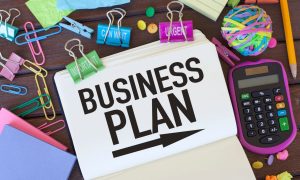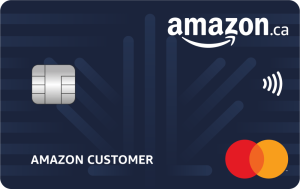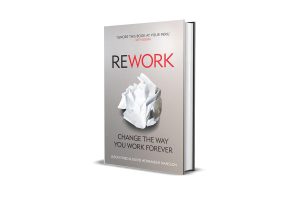Selling on Amazon is one of the most powerful ways to tap into the world’s largest e-commerce marketplace. Whether you want to turn your hobby into a business or earn extra income, Amazon provides numerous opportunities for sellers to grow and scale their online business. However, it can be daunting for newcomers. So, how do you become an Amazon seller, and what are the key steps to ensure success?
In this article, I’ll explain everything you need to know to start your Amazon-selling journey.
1. Create a Business Plan

Before you dive into selling, it’s crucial to have a clear plan. Without a roadmap, it’s easy to lose focus or become overwhelmed by the complexity of Amazon’s marketplace.
When I started selling on Amazon, I quickly learned the importance of a business plan. It’s not just about choosing and listing a product—there are many elements to consider, like your target market, profit margins, and competition. I spent hours analyzing potential niches, researching the demand for various products, and mapping my budget.
Start by identifying what type of products you want to sell. Are you focusing on private label products, reselling, or handmade items? Define your business goals, such as how much monthly revenue you’d like to generate and how many products you need to sell to meet that goal. Create a clear marketing and growth strategy, ensuring you’re prepared to scale once your business takes off.
2. Find a Profitable Niche
Choosing the right niche is one of the most critical decisions you’ll make as an Amazon seller. A profitable niche means you’re catering to a group of consumers with specific needs but aren’t oversaturated with competitors. This part of the process takes a fair amount of research and some trial and error.
For example, I started by selling electronics accessories. While the niche had a lot of competition, I noticed a demand for high-quality, unique items that weren’t widely available. By offering something different, I quickly carved out a space in the market. Research tools like Jungle Scout can help you determine which niches are trending, estimate potential sales, and analyze the level of competition in each category.
How to Find a Profitable Niche:
- Use Amazon’s Best Seller Rankings (BSR): Check Amazon’s Best Sellers list to spot popular products.
- Check Customer Reviews: Look for gaps in the market by reading what customers say about current offerings.
- Use Keyword Research Tools: Tools like Keyword Scout or Google Trends help you identify high-demand, low-competition keywords that can guide your niche choice.
A profitable niche is one with demand but not so many sellers that it’s impossible to stand out.
3. Find a Product Supplier
Once you’ve identified your niche, it’s time to source your products. You have several options here: sourcing locally, importing goods, or working with manufacturers directly. Most Amazon sellers opt for international suppliers, particularly those in China, using platforms like Alibaba to connect with suppliers.
When I started, I spent weeks reaching out to potential suppliers, asking for samples, and vetting each one carefully. This process can be time-consuming but is critical to ensuring the quality of your products and building a trustworthy relationship with your supplier.
Tips for Choosing a Supplier:
- Order Samples: Always order samples before committing to a large order. This helps you assess product quality and shipping times.
- Check Reviews: Supplier reviews and ratings from other sellers can give you insight into their reliability.
- Negotiate Prices: Avoid negotiating for better prices, especially if ordering in bulk.
It’s also worth mentioning that a reliable supplier can be the difference between your success and failure on Amazon. You’ll have to deal with angry customers and negative reviews if they mess up.
4. Place an Order with Your Supplier
Once you’ve found a supplier you’re happy with, it’s time to place your first order. Before committing to a purchase, understand your supplier’s minimum order quantities (MOQ) and pricing structures. Consider the lead time to ensure you can fulfill customer orders quickly and efficiently.
I remember my first large order. I was nervous, unsure if I was ordering too much or if I would sell enough to cover the costs. However, I was excited to see my listings live and ready for purchase once the products arrived.
When determining the pricing for your products, factor in all costs, including shipping, import duties, and Amazon fees.
5. Create an Amazon Seller Account

To sell on Amazon, you need an Amazon Seller Central account. There are two types of accounts: Individual and Professional. If you’re starting and plan to sell fewer than 40 items a month, the Individual plan is a good option. However, the Professional plan is ideal if you want to sell more or access advanced selling tools and features.
In my experience, upgrading to a Professional plan early helped streamline my selling process. It allowed me to run sponsored product campaigns, access advanced reporting, and track sales performance—all vital for scaling my business.
How to Set Up Your Amazon Seller Account:
- Sign up: Go to Amazon Seller Central for an account.
- Provide business details: Amazon will ask for your business information, such as a business email, tax ID number, and bank account details.
- Choose a selling plan: Decide whether you’ll choose the Individual or Professional selling plan based on your goals.
After setting up your account, you’ll be ready to start listing your products.
6. Create an Amazon Product Listing
With your account set up, you can create your first product listing. The key to Amazon’s success is creating compelling product listings that attract potential customers.
Your listing should include the following components:
- Product Title: Include relevant keywords and ensure it’s clear and concise.
- Product Description: Provide a detailed explanation of your product, highlighting its features and benefits.
- Product Images: High-quality, professional images are a must. I’ve seen firsthand how good images can make or break a sale.
- Pricing: Set competitive prices based on your research, but ensure you can still profit.
- Product Details: Include all the necessary details (e.g., size, color, and material) to help customers make informed decisions.
I spent a lot of time fine-tuning my first product listing and experimenting with titles and descriptions until I found the right combination that resonated with customers. Attention to detail in your listing will significantly impact your sales.
7. What is the Cost of Selling on Amazon?
Selling on Amazon isn’t free, and you must factor in the costs before you start. Your selling plan and fulfillment method will determine your fees.
- Individual Selling Plan: Charges $0.99 per item sold.
- Professional Selling Plan: Charges $39.99 monthly, but no per-item fee.
- Fulfillment Fees: If you use Amazon’s FBA (Fulfillment by Amazon) service, you’ll pay fees for storing and shipping your products.
In my case, I opted for FBA because it handled storage, packaging, and shipping, freeing up my time to focus on other aspects of the business. However, the fees can add up, so account for them when calculating your profit margins.
8. Drive External Traffic
Driving external traffic to your listings is crucial to the success of your Amazon business. Use digital marketing strategies such as social media marketing, search engine optimization (SEO), and paid advertising.
I’ve found Facebook and Instagram ads effective for promoting new product launches. Getting traffic to your listings from external sources helps improve your product’s ranking on Amazon and increases its visibility.
9. Encourage Product Reviews
Customer reviews are essential for building trust and driving sales on Amazon. Positive reviews improve your product’s credibility and increase its chances of ranking higher in search results.
I made it a point to follow up with customers after each sale, politely asking for feedback. While Amazon has rules regarding soliciting reviews, asking for honest feedback politely and respectfully is permissible.
10. Take Advantage of Promotions

Amazon offers various promotional tools, including limited-time offers, deals of the day, and discount coupons, that can help you boost your sales. Experiment with these tools to determine which resonates most with your customers.
Conclusion
Becoming an Amazon seller requires research, planning, and a good dose of patience. Whether you’re a seasoned entrepreneur or a first-time seller, these steps will help you build a successful online business. Keep testing, tweaking, and optimizing your approach; you’ll soon see the fruits of your labor.
ALSO READ:
FAQs
Setting up your account and listing products typically takes a few days to a week.
Amazon allows you to sell in multiple countries, expanding your reach to international markets.
No, Amazon does not require you to have a physical store to sell online. You can run your Amazon business from anywhere.


